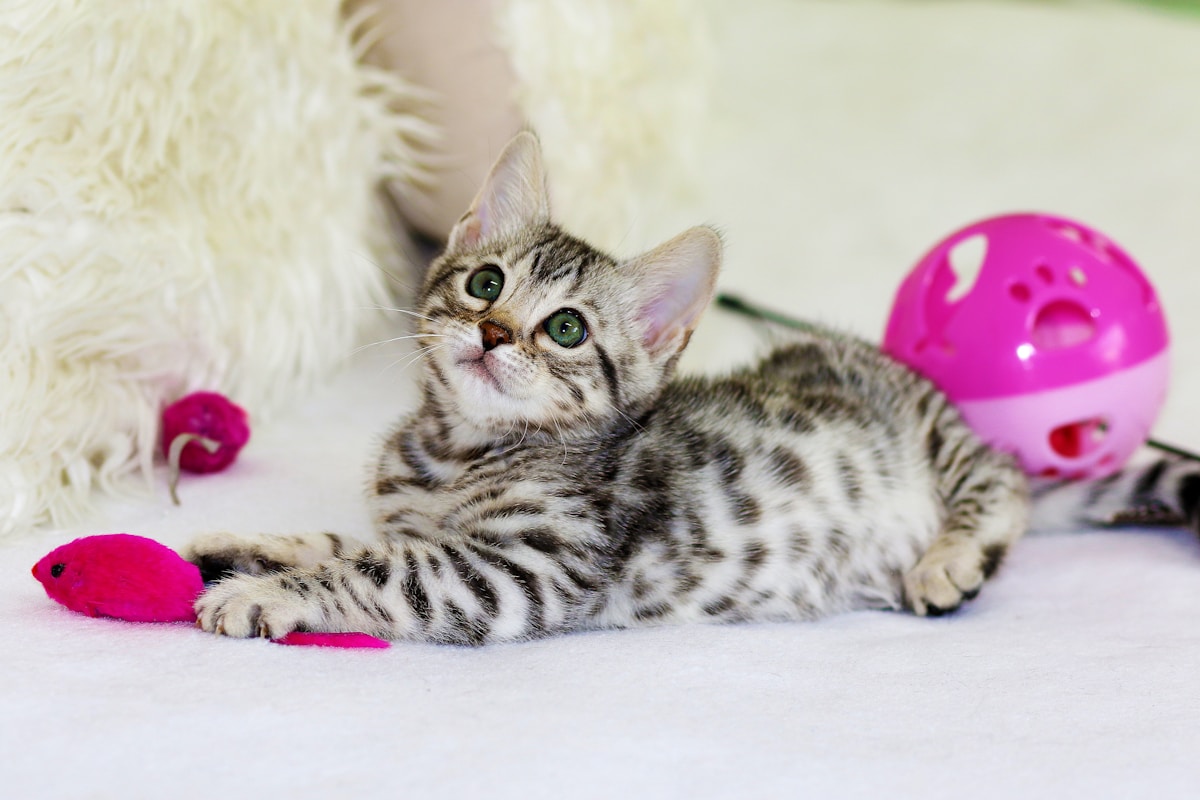If you’ve decided to take a new cat or kitten home, you’re probably very excited- and a little bit nervous! Don’t worry, this is totally normal. Bringing home a new cat or kitten, especially if you’ve never had one before, can feel a little overwhelming- but we’ve got you covered with our top tips!
New Cat Checklist:
When you first bring your cat home, there are a few things you should remember to buy. You’ll need food and water bowls, litter trays, a bed, and a carry box (cat carrier). You’ll also need cat litter (try to buy the same type as they’ve had previously, as cats can be fussy about this) and cat food (again, try to get the same type for the first few weeks whilst your cat settles in). Don't forget to check out an extensive guide on how to choose and modify your home for your pet.
We also recommend that you buy a few toys and a scratching post (at least 90cm tall) to keep your cat entertained.
You’ll also need:
- Vet’s contact number
- Basic first aid kit
- Grooming kit (nail clippers/brush depending on coat length)
- Pet health insurance
- Don’t forget to update your cat’s microchip details.
Adjustment period: 3 day, 3 week, 3 month rule
When your cat arrives home for the first time try to allow them to have their own space to explore and settle in. Cats are individuals, some will be more confident than others and they will all take different amounts of time to feel safe in their new homes and be themselves. Try not to approach your cat too much- let them explore in their own time and come to you when they are ready.
It’s helpful to remember the ‘rule of 3’ when welcoming your new arrival and understanding how they may feel and what to expect:
In the first three days, your cat may be overwhelmed or scared by new things. Some cats, especially if they haven’t been handled much, may eat less or hide for most of the time. They may also suffer from stress diarrhea. Kittens are likely to miss their littermates. It’s important to forgive small mistakes at this time.
In the first three weeks they start to realise this is their new home and settle into a routine. They’re likely to start to show their personalities. You may also see the rise of behavioural issues as they settle in and feel more confident. You can start training your cat now!
In the first three months your cat should start to feel safe and comfortable in their home, as well as build trust and a bond with their family.

Health
Register with a veterinary practice as soon as you can and take your cat in for a check over. When choosing your practice, check whether they also provide out-of-hours services, in case you have an emergency outside of office hours. If they do not, then make sure you know where your nearest emergency clinic is.
It’s also a good idea to get pet insurance. This insurance covers you for unexpected medical bills for your cat, such as if they get hit by a car or get in a cat fight. Insurance allows you to get the best treatment for your cat without worrying about money at a difficult time.
Vaccinations and preventatives
When you adopt your cat, you’ll need to find out what vaccinations, flea preventatives, and worm treatments they’ve already had. Take this information to your vet, who will be able to advise you on:
- Vaccinations: What’s needed and when- usually yearly once the initial vaccination course
- Flea prevention (every 1-3months depending on product and hunting habits of your cat)
- Treatment for internal parasites such as worms – usually every 1-6 months depending on your cat’s lifestyle.
If you have a long-haired cat, you’ll also need to establish a grooming routine.
Training
Cats can be trained, just like dogs. Always use positive rewards such as praise, treats or a favourite toy.
Carry-box training
A safe and secure carry box for transport is essential. You will need this to bring your new pet home, for any cattery stays and definitely for vet visits.
- Introduce the box – allow your cat to go in by choice, never force them in.
- Feed in the box – you can use treats for a positive experience.
- Use it as a bed – the lids come off most boxes.
- Use comfy bedding that won’t slip as you drive/carry your pet.
- Allow your pet to spend short periods of time in the box with the door closed (such as 10mins whilst eating food).
Choose the right box – big enough for your cat (when fully grown!) and enough space for them to stand up and turn comfortably.
There are many types of boxes – the best ones can be dismantled easily, so the cat to be examined in the box or have lids so they can be easily lifted out. This avoids them being dragged or shaken out.
Litter box training
Cats naturally prefer to toilet, eat and drink all at separate places. Litter training is particularly important for kittens and cats that will spend all or some of their lives indoors. Thankfully most cats will take to it fairly quickly.
Top Tips:
- Allow one litter tray per cat in the household, plus one extra. If you have one cat you need two trays, four cats you need five trays and so-on.
- Position trays at different areas of the house.
- Choose the right tray: open, covered, self-cleaning - there are many options! Having a range means your cat will find one they like.
- Choose the right litter: wood or paper based, clumping or non-clumping – find what works for you and your cat. Many cats, adults in particular, can be fussy about litter.
- Clean trays and remove urine/faeces at least once daily. Do not use strongly scented cleaning products as these can discourage your cat.
- Praise for using the correct areas with a treat or game.
- NEVER scold your cat for an accident in the house.
- If you DO catch them toileting somewhere they shouldn’t then tell them a firm ‘No’ and move them to an appropriate place. Praise them when they do it there instead.
Remember that toileting in the wrong place, not toileting at all or straining can be a sign of health issues or stress. This should be discussed with your vet as a matter of urgency, particularly if it is out of character.

Diet
Your cat needs a complete and balanced diet appropriate for their life-stage. They also need the right number of calories- both over feeding and underfeeding cause suffering and lead to health problems. If you aren’t sure what to feed your new cat, your veterinary team will be able to advise.
Never change diet suddenly. If you are planning on changing your cat’s food, then transition from the old diet to the new over at least one week. Even then, some cats can develop tummy upsets.
Exercise and Mental Stimulation
Cats may live indoors, outdoors or both. You can provide free access via a cat-flap or a more rigid routine. Cats need regular exercise and opportunities to run, play, sniff and explore. Cats with access to outdoors naturally have more stimulation as their environment is always changing. You may need to provide more enrichment for indoor cats, but cats can be happy indoors.
Along with physical exercise, cats also need mental stimulation; the amount varies between breed and individuals. There are many options such as interactive feeding toys/games and training games. Sometimes the simplest things are the best (cardboard boxes are always popular!).
Scratching is a very natural behaviour in cats and should be allowed. Provide good quality scratching posts to avoid furniture being ruined. Posts should be tall to allow a cat to stretch fully (over 90cm) and sturdy so that they do not wobble.
Conclusion
Enjoy welcoming your new arrival and remember the adjustment period can be a challenge but keep calm, consistent and most of all be kind. It will be worth it and we wish you many happy years together.
